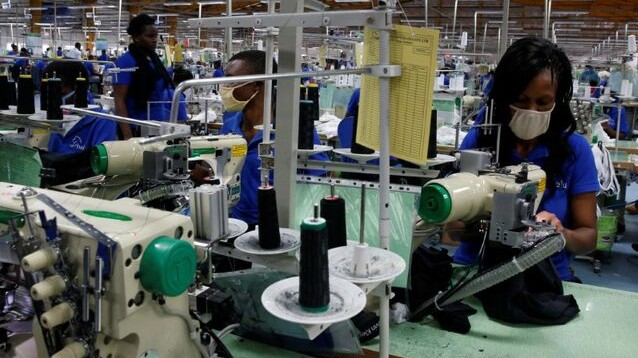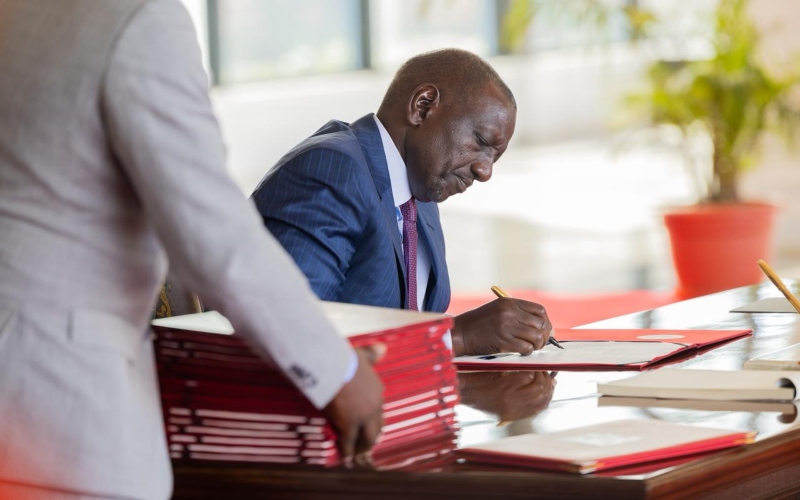Export weakness, key obstacle to Kenya’s path to middle-income status - report

Between 2000 and 2020, the country’s score on export competitiveness in the African Transformation Index (ATI) fell consistently, dropping from 7.9 to 4.7.
Kenya’s ability to compete in global export markets has been declining over the past 20 years, new research has shown.
As a result, the country is being held back in its broader efforts toward economic transformation.
More To Read
- New KIPPRA report exposes the hidden weaknesses crippling Kenya’s forest industry
- Fish is good food and demand outstrips supply in Kenya: How to produce more and get it to market safely
- Lake Victoria fish farmers seek government aid to counter cross-border harassment
- Kenya cuts fish imports as Lake Victoria cage farming boosts aquaculture production
- Investing in rural roads key to doubling Kenya’s farm output - study
- Foreign Investments offer minimal impact to Kenya’s industrialisation, study shows
This includes the pursuit to transition from a low-middle-income country to a middle-income country by 2030.
The 2025 Country Economic Transformation Outlook, by the state-owned research entity Kenya Institute for Public Policy Research and Analysis (KIPPRA), says the backslide is despite steady gains in infrastructure, digital innovation and governance reforms.
“Kenya’s export competitiveness stands out as the weakest link in Kenya’s economic transformation experience, declining over the past two decades,” the report reads.
It highlights that between 2000 and 2020, the country’s score on export competitiveness in the African Transformation Index (ATI) fell consistently, dropping from 7.9 to 4.7.
“Even though service exports, including transport, travel and tourism, ICT, insurance, and finance have shown promise, Kenya is still less competitive compared to regional peers, especially Mozambique, Rwanda, Senegal and Cameroon.”
Kenya’s limited export competitiveness is attributed to its failure to significantly diversify its export structure since 2000.
KIPPRA says the country has continued to rely heavily on a few traditional exports and has made limited progress in emerging sectors that require high technology and competitive pricing.
“The share of manufactured exports within total merchandise exports has remained relatively stable, and even though manufactured goods dominate Kenya’s merchandise exports, the proportion of high-technology exports within the manufacturing sector has been declining, an indication of low technological upgrading in the manufacturing sector,” the report adds.
The National Trade Policy further notes that Kenya’s export market remains narrow, with over 70 per cent of its total exports being destined for 12 countries.
The policy paper further reckons that the country’s product base is also narrow, with about five products accounting for over 56 per cent of total exports.
Additionally, persistent non-tariff barriers and regulatory challenges continue to limit Kenya’s full regional potential.
However, the report maintains a stable outlook for the country’s export market and trade.
It says various trade agreements, such as the African Continental Free Trade Area, the East African Community, and the Kenya-United Kingdom Economic Partnership Agreement, underscore Kenya’s commitment to strengthening regional ties and facilitating trade.
It suggests that the country’s export market share is highest in markets and regions where there is an existing framework of regional cooperation and integration.
This is especially in the form of a trade agreement or an economic partnership agreement.
“Kenya has substantial potential for capturing value from existing exports through incentives to encourage value-addition to agricultural raw materials before export,” the report reads.
“The total untapped export potential for Kenya’s exports is estimated at $4.1 billion (Sh530 billion).”
The downside to this, however, is the limited improvements in both existing markets and products, as well as in venturing into new markets.
Notably, tea, cut flowers, coffee and avocados present the biggest untapped opportunities.
In terms of value, the United States shows the highest absolute difference between potential and actual exports, leaving room for an additional $509.6 million (Sh65.9 billion) worth of exports.
Russia, France and India are the three new markets with a lot of potential.
Top Stories Today












































